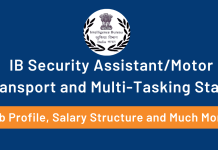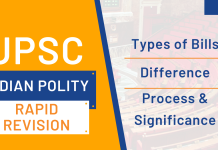What is Normalisation?
Most of the job aspirants must be well aware of the term ‘Normalisation’. It is a term quite prevalent among most of the government job aspirants. This is a process adopted by most of the recruiting bodies that organize examinations across various shifts, to make sure the candidates appearing in the government exams are assessed in an unbiased or impartial manner. ‘Normalisation’, as the term suggests, is the process where the scores obtained by the candidates are ‘normalised’ or ‘brought down’ to a particular score / cut-off fixed by the recruiting body, on the basis of certain common parameters, to ensure fair evaluation of the candidates. Almost all the banking exams that are held these days,adopt this method of normalisation. Most of the bank exams are conducted by IBPS which uses this method while declaring results for all the exams.
Why do we need Normalisation?
‘Normalisation’ as discussed above, is a process which is brought into use majorly by IBPS which conducts all banking exams,to ensure a fair competition among the candidates. How and why is it done?, is a major query of most of the candidates. Normalisation is done by ‘equalizing’ or balancing the scores obtained by all candidates, in all the shifts conducted by IBPS in banking exams. The main reason of IBPS and other recruiting bodies adopting this method of normalisation is that almost all the exams that are conducted these days are held in various shifts across weeks, depending on the number of vacancies. All the shifts consist of questions that are of varied difficulty level. The examinations usually consist of three-stage selection procedure where the first two phases are ‘Prelims’ & ‘Mains’ that are written examinations and the third stage is ‘interview’. The Prelims exam is the one with most shifts held across weeks. There are usually three-four shifts conducted each day (Saturday & Sunday). The ‘Mains’ exam is usually conducted in just one weekend or sometimes in a day (Sunday), as most of the candidates are shortlisted through the prelims exam, thus there are not many candidates left to appear in the Mains exam. Now, as there are many shifts in the exam, and all the shifts cannot have the same questions, thus to maintain the standard of the examination, all the shifts contain different questions which may vary with respect to the ‘difficulty level’ and the ‘pattern’ of questions.
Some of the shifts contain an easy level, whereas another shift on the same day may contain difficult questions. Due to this varied difficulty level in the shifts, IBPS adopts normalisation method before it releases the final result, to make sure that none among the candidates suffers in the examination. Though, the difficulty level of the exam also depends on the number of vacancies.
How is Normalisation done?
Normalisation is done through Equi-Percentile Method. The first step of this process, involves calculating the percentile rank of the candidates for each shift of the exam. The formula for the same is:
| Percentile Rank of the Candidate = (Total Students in a shift – Rank of the candidate in that shift) / ( Total Students in a shift – 1 ) * 100 |
After the calculation of the percentile, a cut-off percentile is fixed based on the number of vacancies available. According to this cut-off score, the candidates are finally shortlisted for the next phase
- Normalisation brings equality in the selection process. Thus, candidates need not worry regarding the selection if they have given their best.
- It can also lead to unexpectedly higher marks than expected of any particular candidate and vice-versa.
- Normalisation ensures a fair and unbiased selection process.
Except banking exams like IBPS PO, IBPS Clerk, IBPS SO and others, SSC has also introduced normalisation method in it’s CGL Exam.
Get Free Online Test Series, Daily GK Update, PIB Current Affairs, Banking Awareness as well as latest updates for Bank PO, Bank Clerk, SSC, RBI, NABARD and Other Government Jobs.
експресс займзайм с автоматическим одобрениемзайм онлайн только по паспорту















